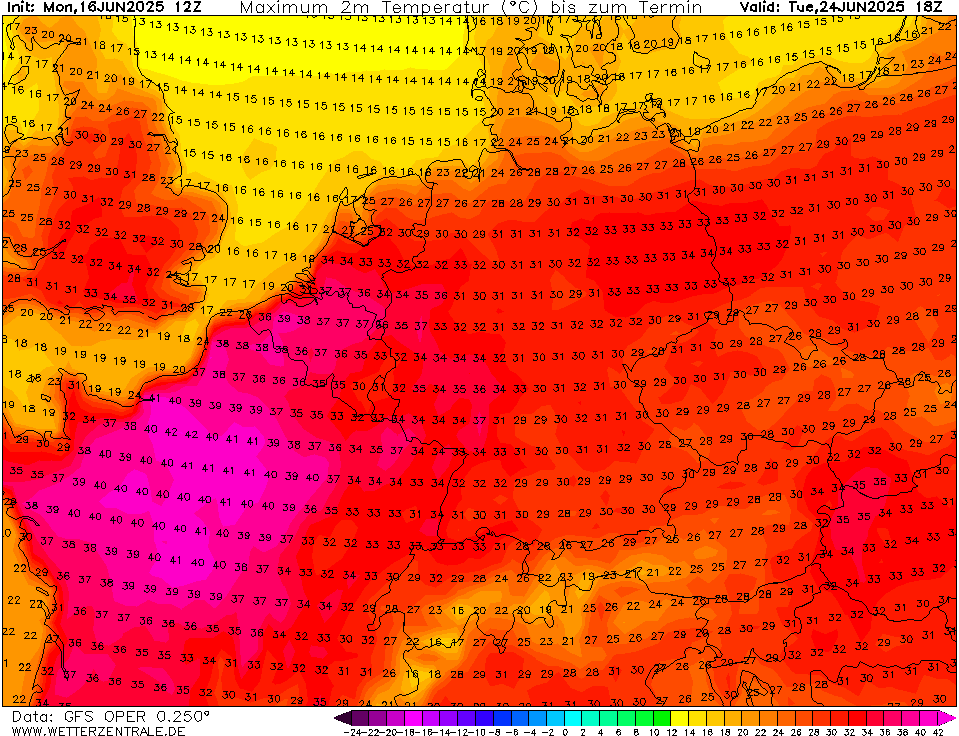
Western Europe is on the verge of breaking one of its oldest climate records. Meteorological forecasts now predict that in just seven days, Belgium may reach a scorching 39°C, while the Netherlands could hit 37°C — dangerously close to June records that have stood since 1947.
With climate change accelerating the frequency and intensity of heatwaves, these extreme temperatures are no longer outliers, but increasingly part of a new weather reality.
🌡️ The Records at Risk
- Belgium: The current June record is 38.8°C, set on June 27, 1947 in Uccle. Forecasts now show temperatures possibly reaching or exceeding 39°C around June 23–25, especially in inland areas like Limburg and Brabant.
- Netherlands: The highest June temperature was 37.2°C, recorded on June 27, 1947 in Maastricht. This could be challenged by upcoming peaks of 37°C, particularly in the southeast.
If these projections materialize, both nations could see their hottest June days in over 75 years — breaking records once considered nearly untouchable.
🔥 What’s Driving the Extreme Heat?
Meteorologists attribute this potential record-breaking heat to a combination of:
- A powerful high-pressure system locking in warm air over Western Europe
- Saharan air masses sweeping northward, pushed by a stalled jet stream
- Low soil moisture and drought conditions, which reduce natural surface cooling
This combination, often referred to as a “heat dome,” creates a self-reinforcing feedback loop that leads to rapid and extreme heating.
🕰️ Why 1947 Was Legendary — and Why 2025 Could Surpass It
The summer of 1947 was infamous across Europe. It was marked by prolonged droughts, failed crops, and record-setting heat — a weather outlier in what was then a much cooler climate. The June records set that year in Belgium and the Netherlands have stood as historic high points for generations.
But in 2025, similar temperatures may now be reached in a matter of days, and in a climate that is already +1.5°C warmer on average than it was in the mid-20th century. What was once rare is now increasingly routine.
🏙️ Heat Risk for Populations and Infrastructure
While both countries are known for their excellent infrastructure, they are not well-prepared for extreme heat:
- Air conditioning is still uncommon in many homes, especially in older buildings
- Public transit systems may face delays or shutdowns due to rail warping and power failures
- Health services are expected to see increased demand due to heat exhaustion and dehydration
- Elderly, infants, and outdoor workers are at particular risk
Governments in both countries have begun issuing preliminary heat warnings, encouraging residents to:
- Stay indoors during peak heat hours
- Stay hydrated and avoid alcohol
- Check on neighbors, especially the elderly and isolated
- Limit strenuous activity outdoors
📆 June 23–25: Watch This Window Closely
The period between June 23 and 25 is shaping up to be the critical heat peak. If skies remain clear and winds remain stagnant, both countries could experience record-breaking heat — potentially rewriting their meteorological history books.
🌍 Climate Signals Growing Louder
This isn’t just about numbers on a thermometer — it’s part of a much broader shift. Scientists from the Royal Meteorological Institute (RMI) in Belgium and KNMI in the Netherlands have warned for years that extreme heat events are becoming more frequent, earlier, and more intense due to climate change.
- The Netherlands experienced its hottest day ever (40.7°C) in July 2019.
- Belgium reached 41.8°C that same month — smashing all-time records.

Source: https://www.wetterzentrale.de/

Detail.


























